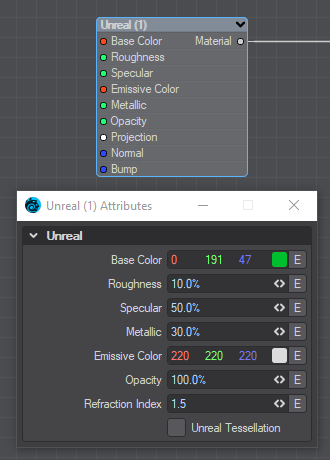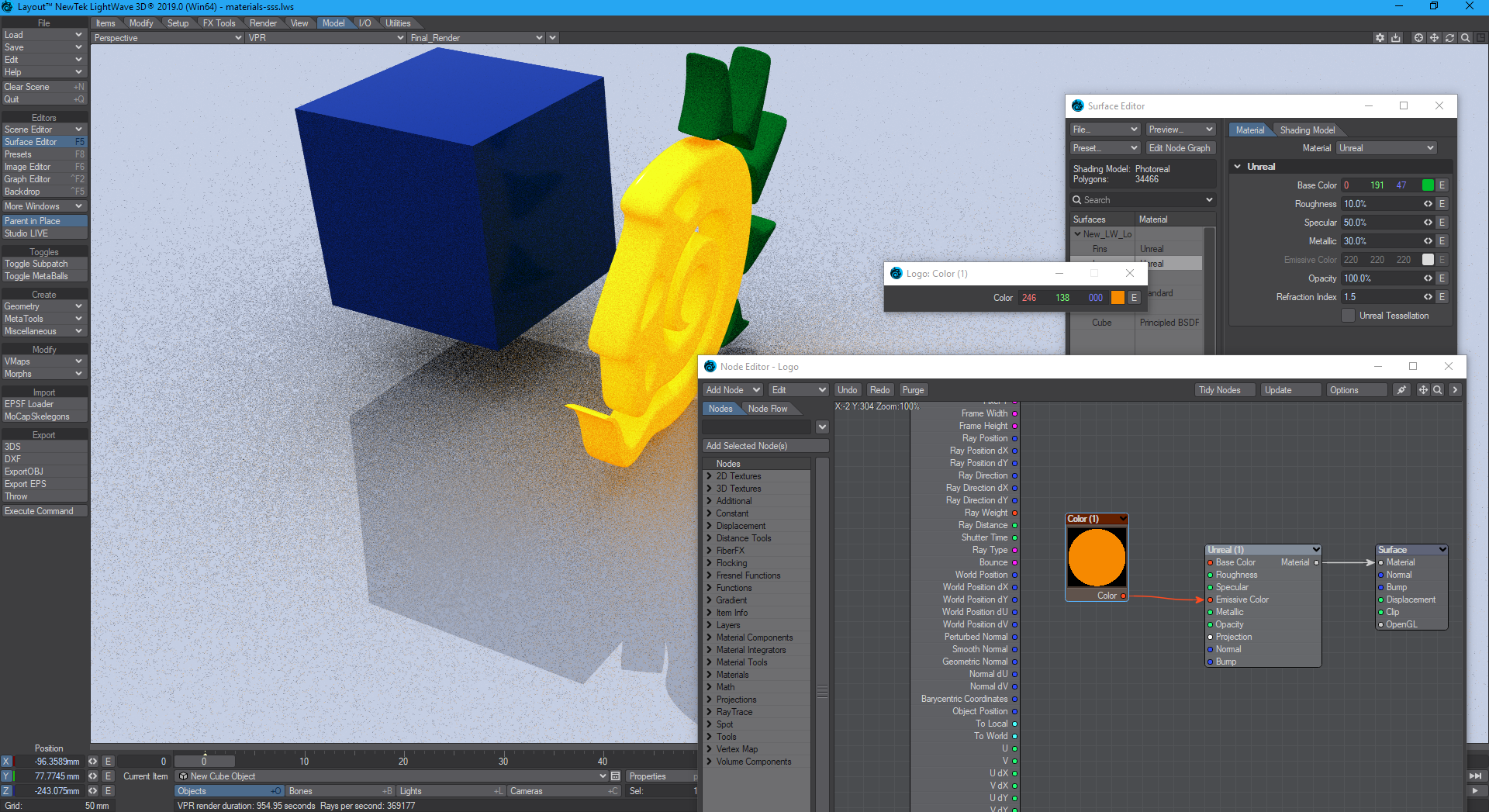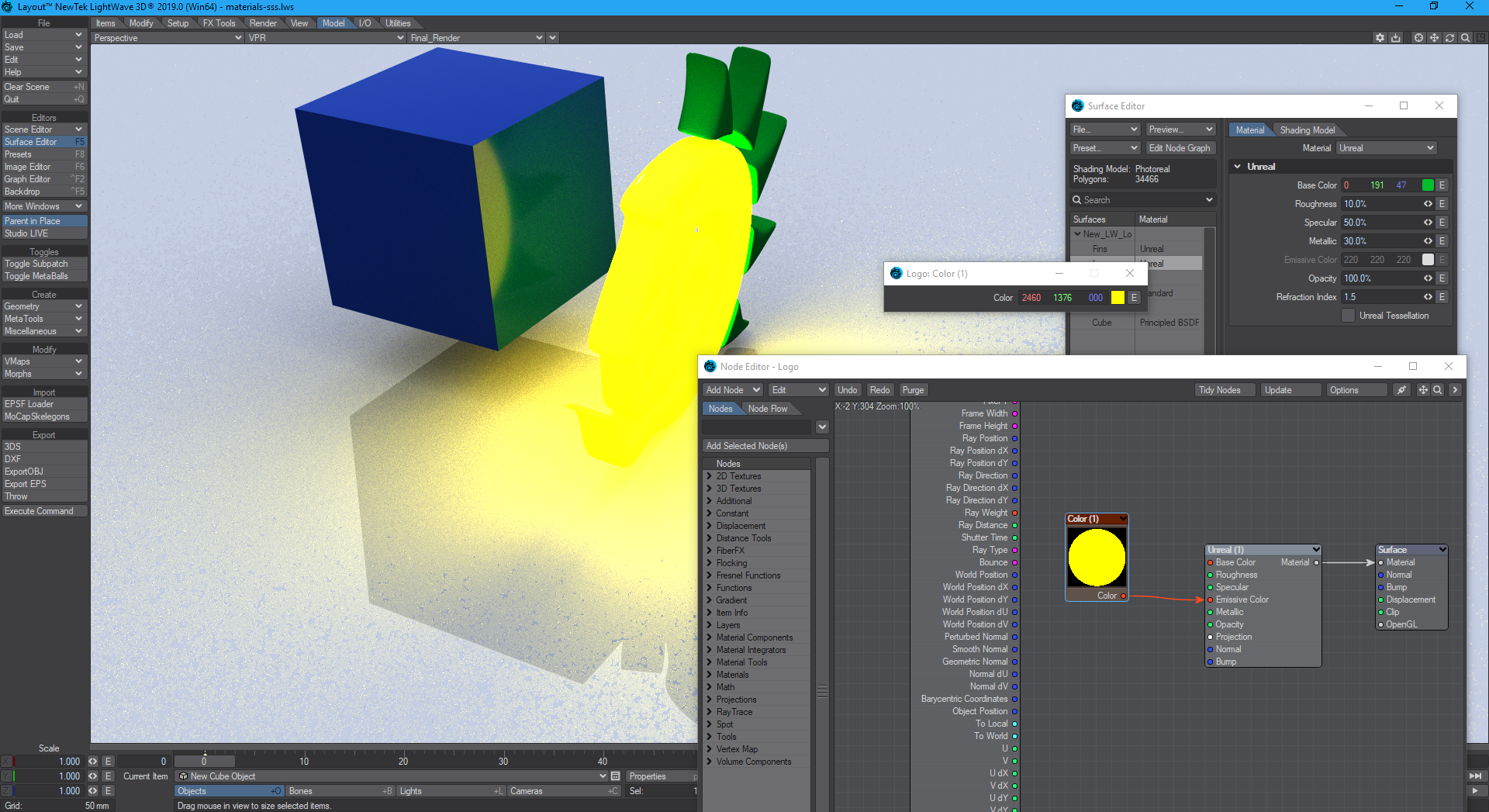Unreal
The Unreal material is a pared down version of the Principled BSDF material adapted for games. It is designed specifically for use with the Unreal games engine however it will work perfectly well inside LightWave too and can be very useful as a simpler version of PBSDF. Like that material, Unreal can be used for surfaces of many different kinds including glass, metals and plastics though subsurface scattering or carpaint-type settings are not available directly inside the Unreal material.
Base Color (Color)
Choose the base color for your material
Roughness (Scalar)
This setting is usually paired with Specularity and defines how tight the reflection will be. A high roughness will mean that the surface might be reflective but the reflection will be diffused and unrecognizable.
Specular (Scalar)
Specularity is the correct term for reflection. Normally all surfaces have some element of incident reflection and this setting is usually accompanied by a Roughness setting (in the Standard material this accompanying setting is called Glossiness and works in the opposite direction - 100 % Glossiness is the same as 0 % Roughness).
Metallic (Scalar)
The metallic-ness (0 = dielectric, 1 = metallic) - this is a linear blend between two different models. The metallic model has no diffuse component and also has a tinted incident specular, equal to the base color.
Anisotropy (Scalar)
Anisotropy is a bias in the direction of lighting a surface. At 0 % a surface is isotropic, meaning there's no bias. As you approach 100 % your surface will become maximally anisotropic. Some degree of Roughness is necessary for anisotropy to be visible, and the amount tells the anisotropic highlight how far to "spread".
Anisotropy requires that there is a Projection node input otherwise you will get strange polygonal shapes in the render.
Left: Anisotropy at 100 %, Rotation at 15 %, Roughness at 30 %. Right: No Projection
Rotation (Scalar)
This determines the angular rotation for your anisotropic highlights. At 0 % the rotation will follow the curve of your object and at 50 % will be perpendicular to it.
Emissive Color (Color)
The color that your surface will glow with. You can use the multiplier setting in LightWave's color picker to increase the amount of light emitted.
There is a Constant Color node feeding the Emission Color input
In the Color Picker, change the X multiplier to 10.0
Now the glow is much brighter
Opacity (Scalar)
How transparent your surface is.
Refraction Index (Scalar)
The index of refraction for the surface. Only useful when Opacity is less than 100 %.
Unreal Tessellation
This toggle has no effect in LightWave but converts geometry to Curved PN triangles inside Unreal. These triangles offer better normals and displacements than regular geometry and are optimized directly on the graphics card.





